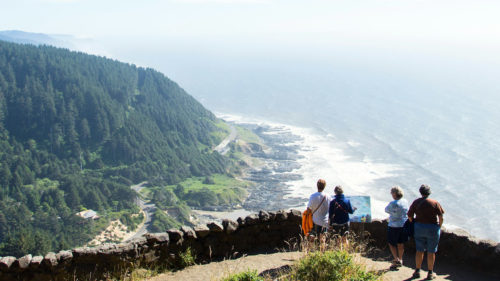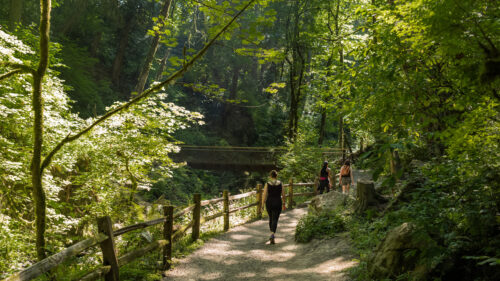I am that person — the wannabe hiker. I have lived in Oregon for over 36 years and have yet to overcome my fear of the forest and fully embrace the Pacific Northwest’s favorite activity of hiking.
Over the years, I have accompanied a few friends on various trails, but I have yet to set out on a hike without the support of a seasoned expert. What keeps me home while my hiking friends watch early sunrises from mountaintops, walk through trails of spring wildflowers and take in sweeping views of the Pacific Coast from hikes I only dream of? The time came for me to figure it all out. Here’s how I got started — and also a few tips to help you join the ranks of Oregon hikers.
Learning From Others
I joined an online group years ago with the hope it might give me a boost of courage while watching other women adventuring and serve as a source of inspiration. The group, known as the PNW Outdoor Women Group, has 53,000 members. When I asked them to share with me how they overcame forest fear, they assured me that a little fear is actually healthy. You can learn from what others have experienced by listening to podcasts, reading books, and taking a course on survival and safety skills. Learning to read maps is essential, too, as is being aware of your surroundings.
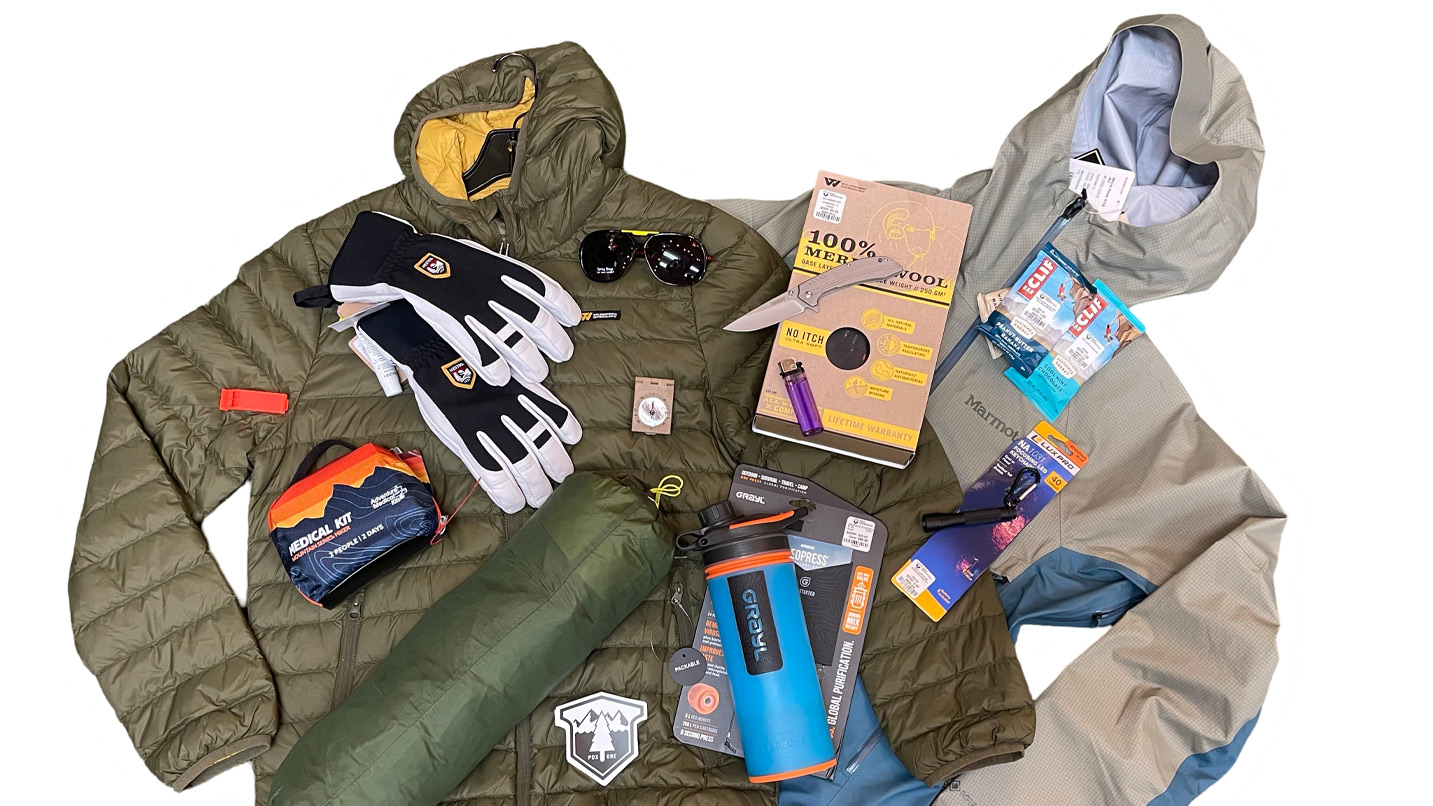
Understanding the Essentials
I started to familiarize myself with hiking and being prepared in the most efficient way possible with a visit to Next Adventure, one of Portland’s many outdoor stores. While there, I spoke with expert employees Alejandro Ponce and Amy Henrikson, who encouraged me. The more I go, the more confident I will become, they said, and preparedness can overcome fear and inexperience in the forest.
They also shared some specifics about being prepared. Though you can start hiking with sneakers, you may want to buy grippy or waterproof trail shoes for more rugged trails. A good outdoors shop sells appropriate footwear and can also fit you for a backpack from an Oregon-based gear company like Six Moon Designs or good hiking poles, which help with traction and balance, especially on steep hills.
Next Adventure’s friendly sales people also helped me choose sock liners, which help prevent blisters, and a used lumbar pack (better known as a fanny pack) from the resale basement. I added some base layers from Columbia Sportswear, Betty Lou’s energy bars and high-quality Danner hiking boots from the Danner outlet store — all proudly based in Oregon.
Ponce and Henrikson also educated me about the Ten Essentials, a group of safety items every hiker needs to keep on hand. These range from food and hydration to navigation, survival and first-aid supplies. Some add an 11th essential item: a satellite communication device or personal locator, which uses GPS to send an emergency beacon. My online group also emphasized bringing extra prescription medication, glasses or contacts, and any other necessary personal items.
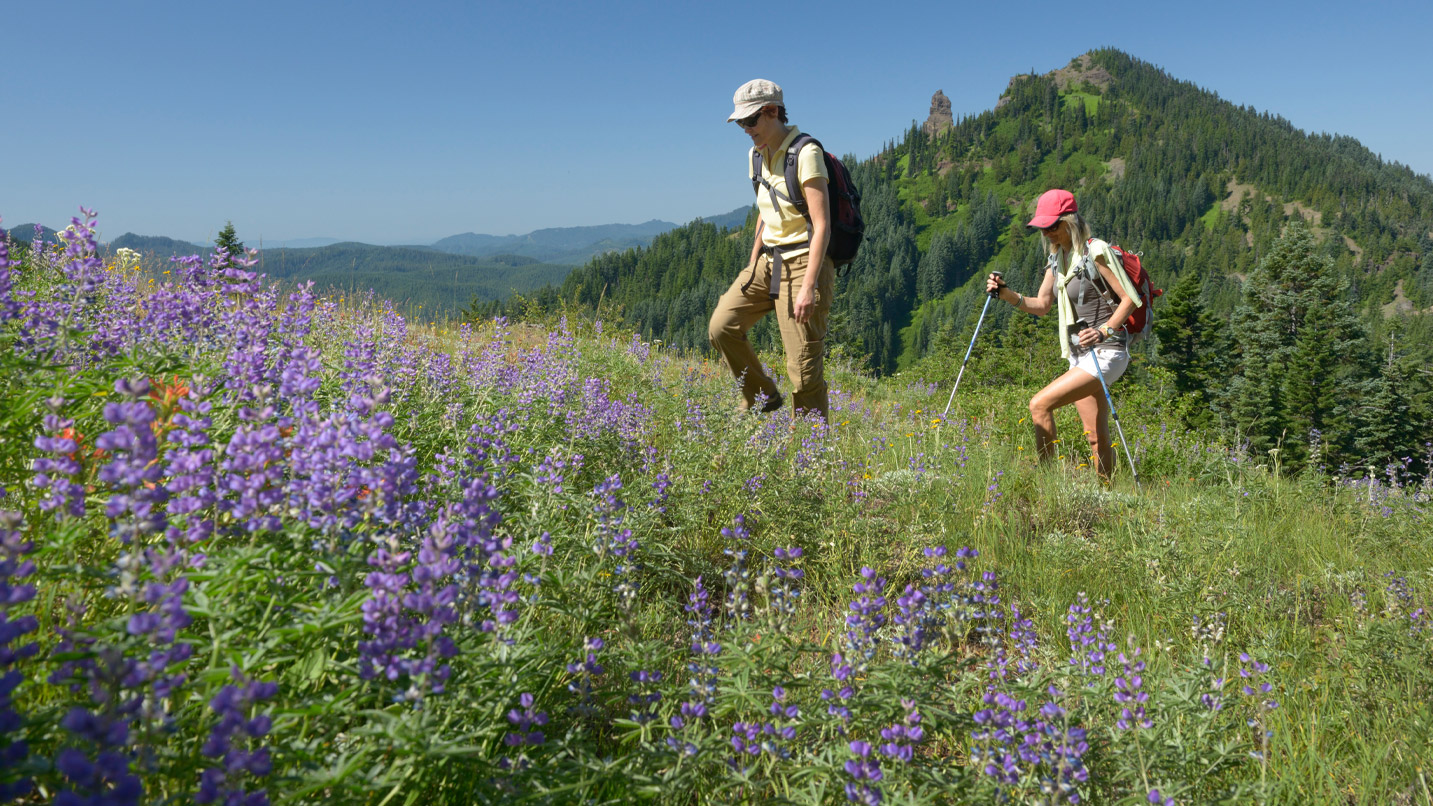
Finding Your Home Trails and Beyond
Ponce added a helpful suggestion for new hikers: Find what he calls “home trails” and repeat those enough to feel familiar with them; this confidence will grow your skills and prepare you for more advanced hikes.
Choosing a trail is easy yet challenging. There are 2,971 curated Oregon hikes on the comprehensive AllTrails app, so you can find a hike in almost any area. Search for hikes and download trails before a hike in a place that might not have cell reception. The app shows elevation, distance, estimated time to finish and difficulty. Oregon is also home to a host of accessible trails for people of different mobilities.
For any trail, it’s a good idea to bring along paper maps in case your devices fail, as well as a pocket guide for birding or wildflower identification. With over 400 species of birds in Oregon, it’s helpful to take a look at the Bird Alliance of Oregon and the Oregon Birding Association before you leave, and check out the AllTrails app’s birding resource, as well. There is also an app for wildflower identification called Oregon Wildflower Search.
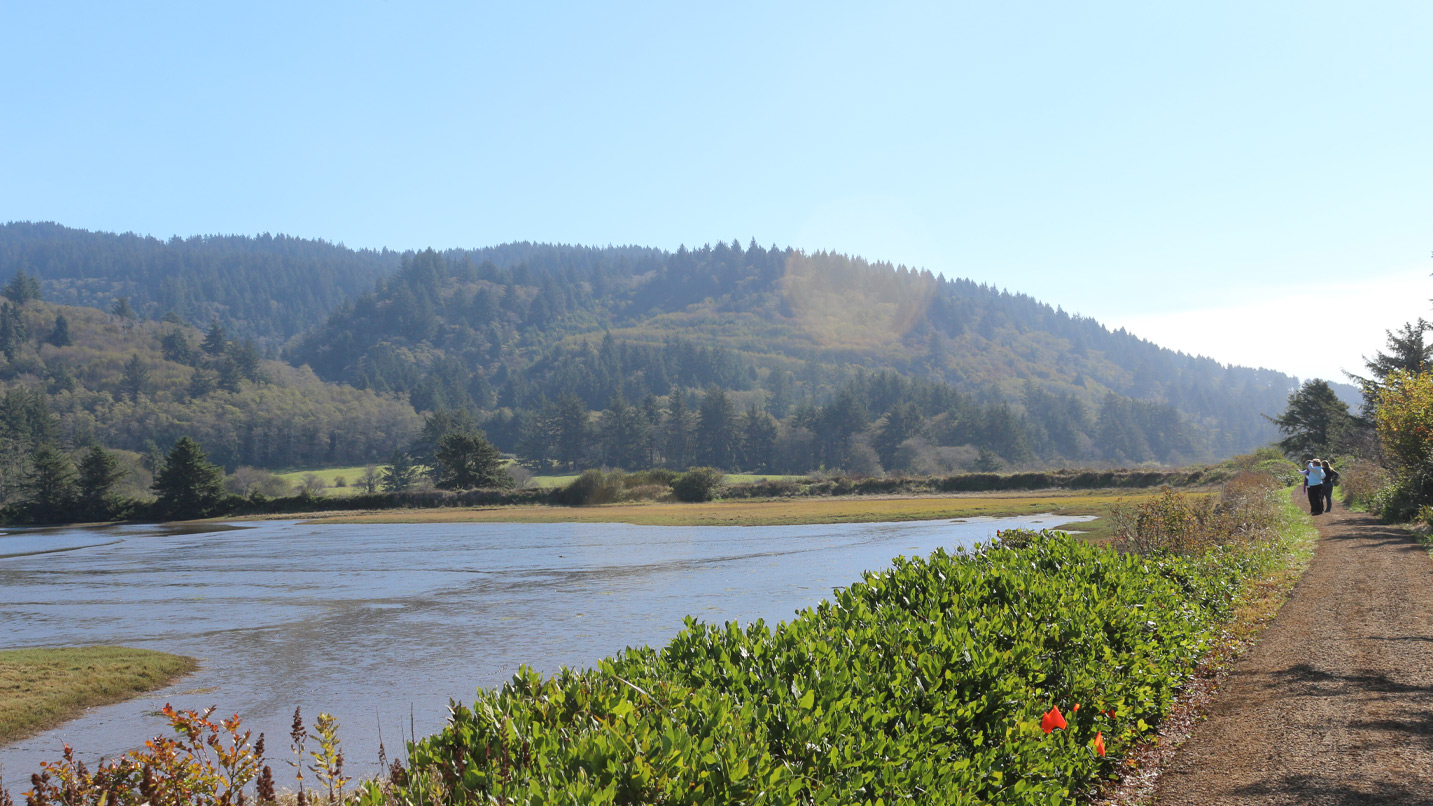
Finding Home Trails in McMinnville, the Coast and Portland
Prepared with gear and the advice I received from others, I was ready to hike on my own.
I began my journey slowly and steadily with a hike at what has now become my home trail, Miller Woods, 3 miles outside of McMinnville, a 4-mile loop that meanders through fields and forest paths. This highly used area gave me a strong sense of safety as I developed my skills. It’s strange at first to hike into the woods and be surrounded by only trees and the cracking and creaking sounds of the forest. My confidence grew as I trusted the process, relied on the trail markers and said quick hellos to passersby.
Feeling confident, I headed off to hike the Sitka Sedge Natural Area Loop — an easy-rated short trail 6 miles north of Pacific City — with another hiker. The flat trail is a 3-mile loop with beach access at the halfway point. After soaking in the ocean air, a quick stop for fish and chips at Sportsman’s Pub-n-Grub topped off the day.
I then upped my adventure level by adding some elevation on the Trappist Abbey Guadalupe Loop outside Lafayette, located approximately 10 miles from McMinnville. This 4-mile hike took me up the hill behind the Abbey for views of wine country and along a tree-lined ridge. I was happy to have had my hiking poles with me for the incline, giving me balance and a sense of control underfoot. I took shorter steps, concentrated on taking easy breaths and reminded myself that I was capable. I took all the time I needed and made it to the top, and the struggle was worth it.
My hikes weren’t only limited to natural areas. I also headed to Portland with a friend for an urban hike on the popular 4T Trail. This trail is fun because it adds the thrill of urban transportation — trail, tram, trolley and train — to your walk. While the whole loop is 10 miles long, the hiking sections add up to 4 miles and take you through wooded urban forests surrounding Portland. Starting at the Oregon Zoo, we hopped on the Oregon Health and Science University aerial tram to the South waterfront, then headed downtown via streetcar (aka trolley). After enjoying the city, we took the Max Light Rail train back to the Zoo. You can see so much of the city this way.
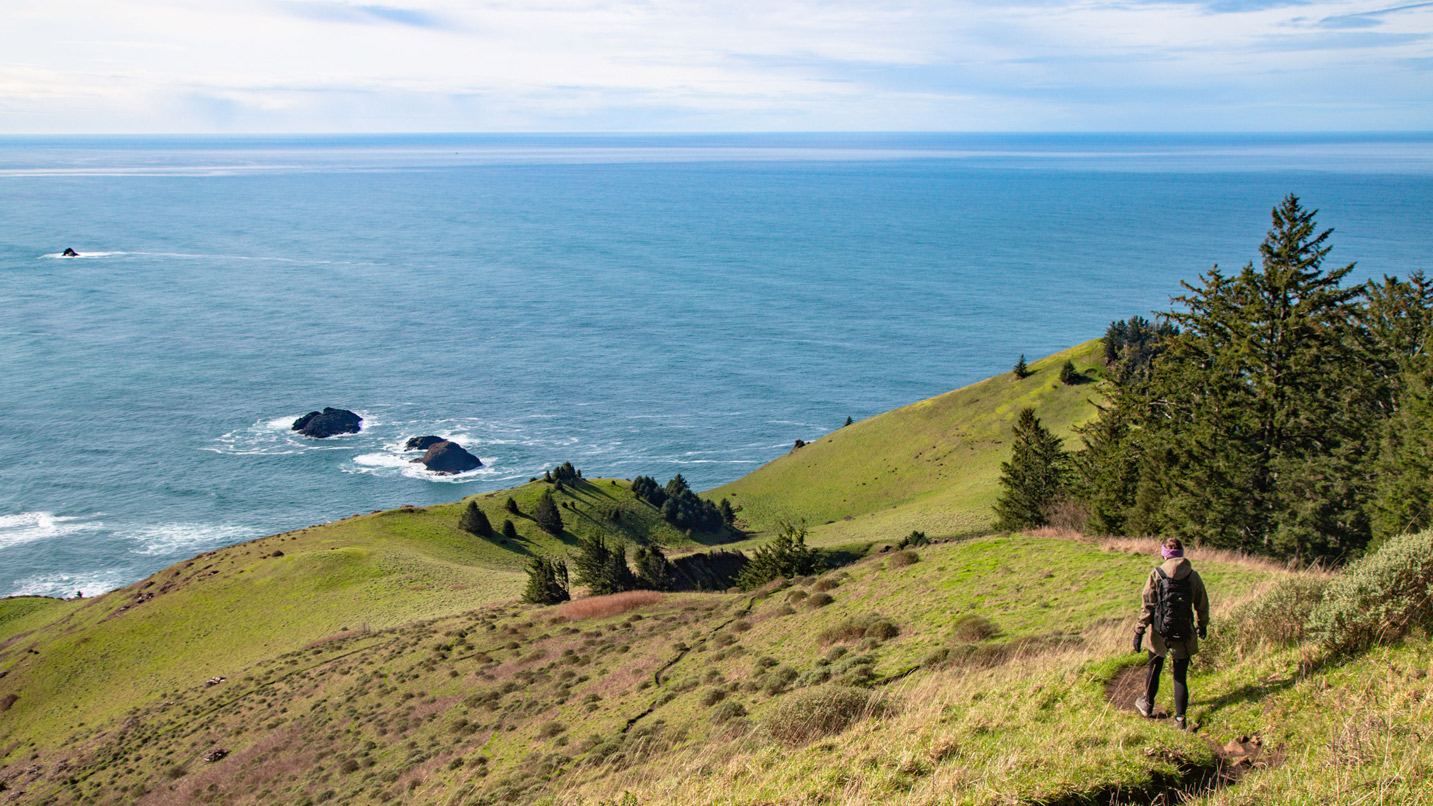
Gearing Up for Bigger Adventures
Feeling as if I’d conquered some entry-level hikes, I decided to try for distance and hiked the Astoria Riverwalk Trail. Following the Columbia River with views of the Astoria-Megler Bridge and all the ship traffic in this North Coast town, the trail was flat and mostly straight. Roughly 10 miles out and back, however, it proved more challenging than anticipated, especially during the final 3 miles when it poured with rain. Nevertheless, knowing I could hike 10 miles was an exhilarating feeling.
What is keeping me from hiking more beautiful Oregon trails? Turns out — nothing!
My fear of the forest has lessened, just as people said it would. Now that I have my home hiking trails locked down, my gear in order and miles on my footwear, I am no longer a wannabe. When the weather permits, I plan to tackle longer hikes and trails with more elevation, and overall more advanced hikes like Henry Hagg Lake, Marys Peak Trail, Lower Cascade Head Trail and — dare I dream — the Elk Mountain Loop Trail. These trails excite me because they now feel achievable.
It has taken me 36 years of living in Oregon to see the forest through the trees. I am continuing to learn that the trails are for everyone, including me and other middle-aged adventurers. The trails, the wildflowers and the birds don’t care if you are fit or not, young or old, a novice or an expert. Some will walk slower, stop more, snack more and may never aspire to hike Mt. Hood to the summit — and that’s okay. Small goals make way for achieving bigger goals, just like short flat hikes that end at a warm coffee shop or with fresh fish and chips make way for summit hikes at sunrise.

